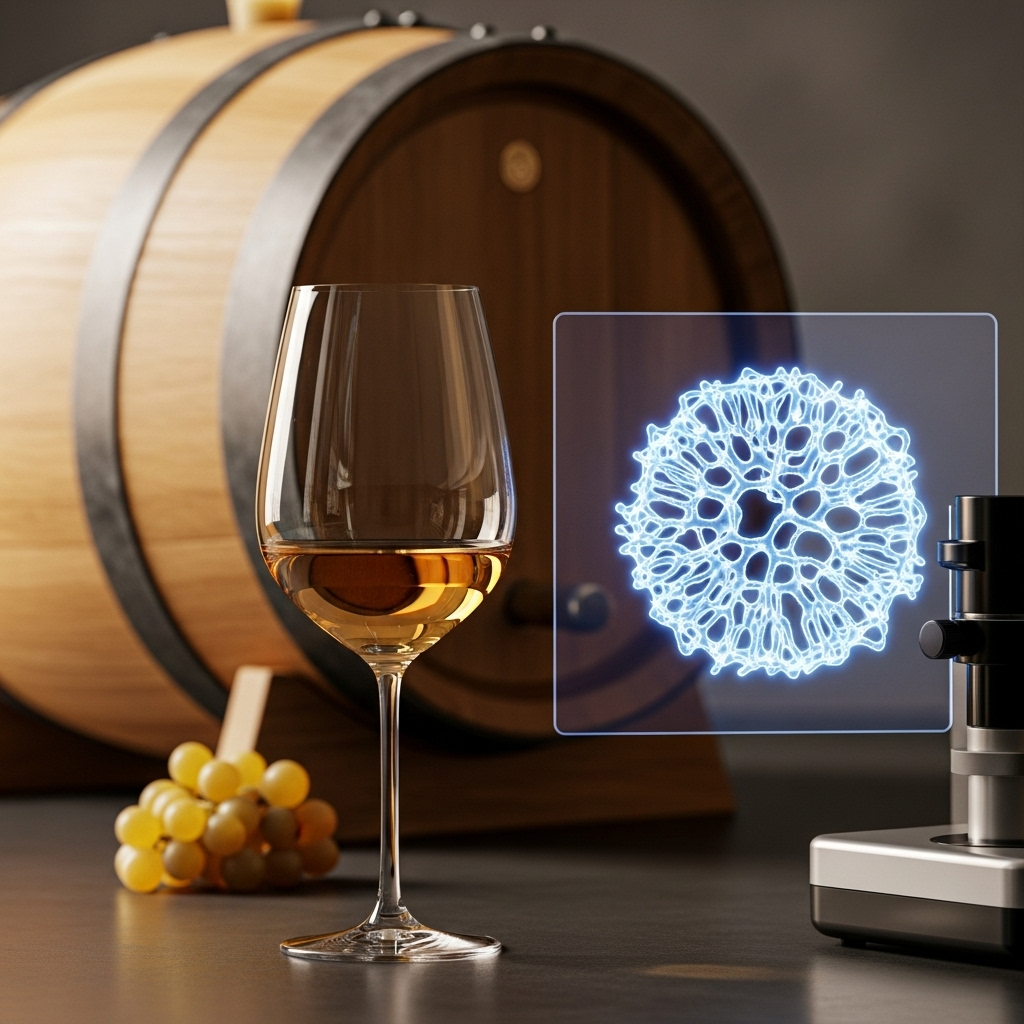
AI patents microbe for efficient wine aging
Share
The Breakthrough: AI-Engineered Microbe Revolutionizes Wine Aging
The introduction of AI-engineered microbes marks a transformative moment in the wine industry, promising to enhance both the quality and efficiency of wine aging. Traditionally, the aging process relies heavily on time and environmental conditions, often requiring years for optimal flavor development. However, researchers have harnessed the power of artificial intelligence to design a microbe that accelerates this process without compromising the wine’s integrity. By simulating various aging conditions and analyzing chemical interactions, the AI was able to identify specific microbial strains that can replicate the nuanced flavors typically achieved over long periods.
This innovation not only shortens the aging timeline but also offers winemakers the ability to tailor their products more precisely to consumer preferences. As a result, the industry is poised to embrace a new era where quality and speed coexist, potentially reshaping the market landscape and redefining consumer expectations. The implications of this breakthrough extend beyond efficiency; they herald a future where technology and tradition blend seamlessly, creating wines that are both exceptional and accessible.
The Science Behind the Innovation: How AI and Microbial Engineering Enhance Wine Quality
The intersection of artificial intelligence and microbial engineering is revolutionizing the wine industry, enabling vintners to enhance quality and efficiency in ways previously thought impossible. At the heart of this innovation lies the ability of AI to analyze vast datasets, including environmental factors, fermentation processes, and flavor profiles. By identifying patterns and predicting outcomes, AI can guide winemakers in selecting specific microbial strains that optimize the aging process.
Microbes, such as yeast and bacteria, play a crucial role in fermentation, influencing not just the alcohol content but also the aromatic and flavor characteristics of wine. With AI-driven insights, winemakers can now engineer these microorganisms to enhance desirable traits, such as complexity and balance. This precision not only accelerates the aging process but also ensures consistency across vintages, allowing for a more predictable and enjoyable product. As this technology evolves, the potential for creating unique, high-quality wines tailored to consumer preferences expands, marking a new era in winemaking.
Implications for the Wine Industry: Balancing Tradition with Technological Advances
As the wine industry grapples with the implications of AI-driven innovations, the challenge lies in balancing time-honored traditions with cutting-edge technology. The introduction of patented microbes for efficient wine aging offers an intriguing glimpse into the future of winemaking, where science and artistry converge. Traditionalists may express concern that such advancements could dilute the craftsmanship that defines fine wines, yet, it is essential to recognize that technology can enhance rather than replace these artisanal practices.
By integrating AI into the winemaking process, vintners can optimize fermentation and aging conditions, potentially leading to more consistent quality and unique flavor profiles. This synergy between tradition and technology not only promises to elevate the wine experience but also addresses sustainability concerns, enabling producers to make more efficient use of resources. As the industry navigates this transformative landscape, the key will be to embrace innovation while honoring the heritage that has shaped wine culture for centuries. Ultimately, the successful integration of these advancements could redefine what it means to produce and enjoy wine in the modern era.
